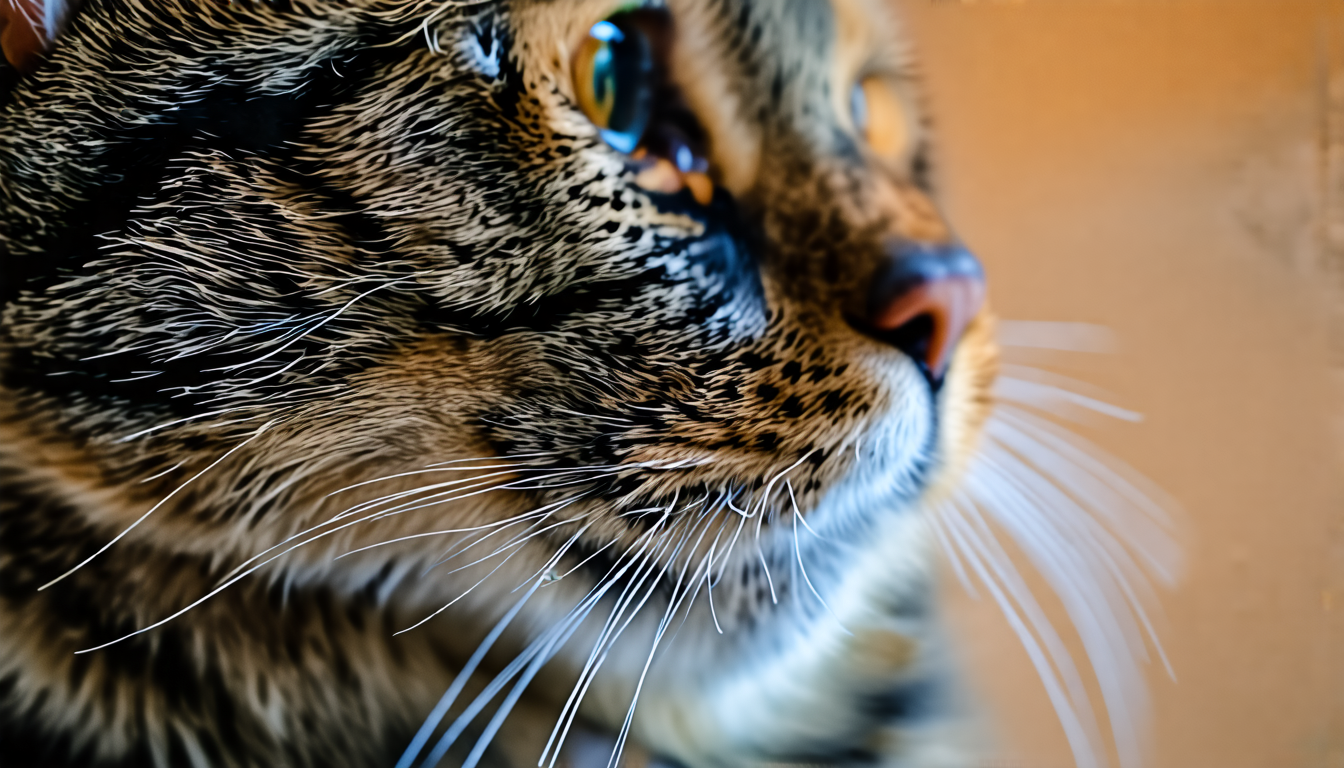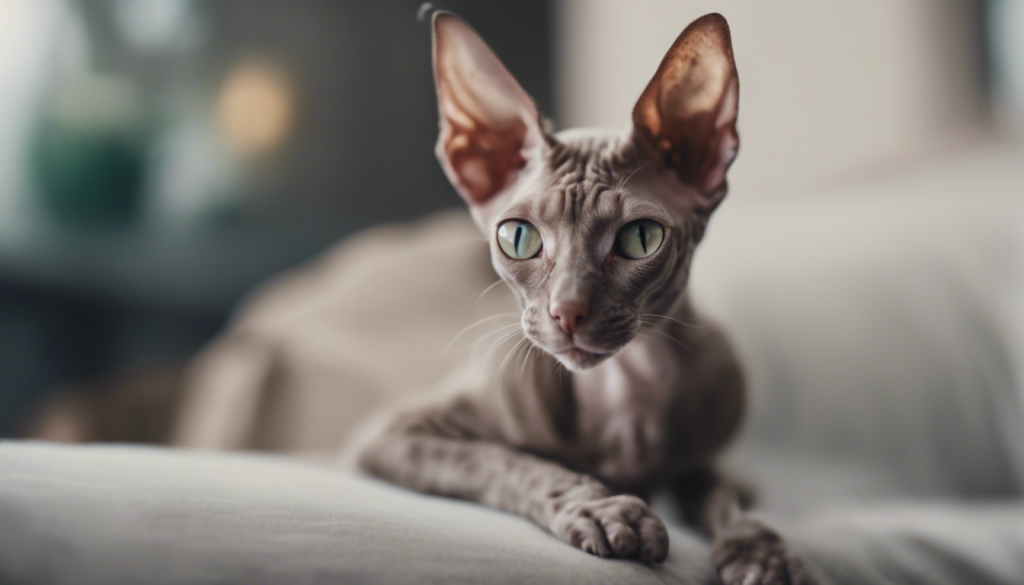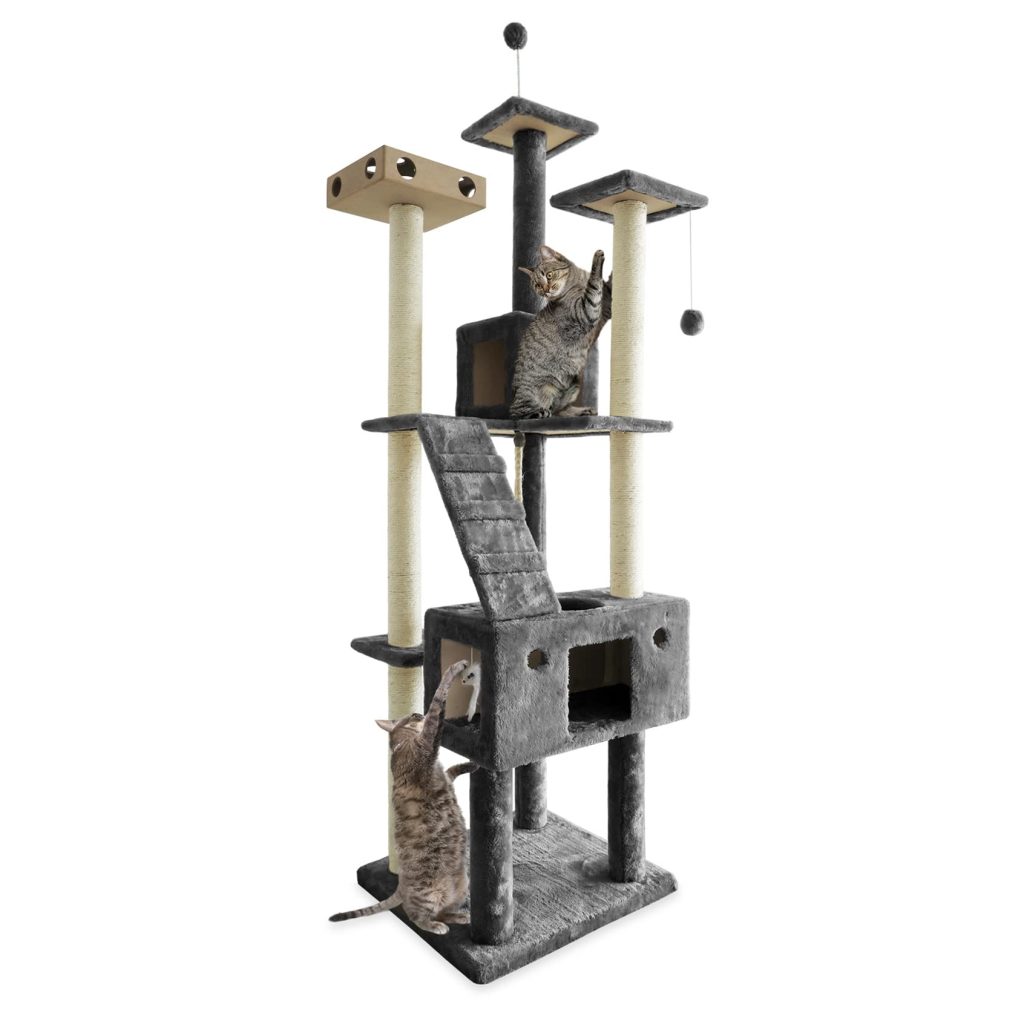
Pheromones, the intricate chemical signals that facilitate myriad forms of communication in the animal kingdom, play a particularly captivating role in the lives of cats. These tiny molecules, imperceptible to the human nose yet profoundly influential in feline interactions, operate through a complex system deeply embedded in their biology. The vomeronasal organ, or Jacobson’s organ, is the epicenter of this olfactory magic, nestled between the roof of the mouth and the nasal cavity. It allows cats to process these chemical cues, sending messages that can influence a range of behaviors and emotional responses.
In a world where subtlety is vital, pheromones serve as a silent yet profound language, articulating states of mind and intent. For instance, when a cat rubs its face against furniture, people, or other cats, it isn’t merely displaying affection; it is depositing its scent, laced with specific pheromones that claim ownership of its territory and fortify social bonds. Each pheromone carries a unique profile, capable of triggering a medley of reactions in both the sender and the receiver. Thus, the chemosensory system of felines ensures that their social structure remains intact, dynamic, and responsive to environmental changes.
Scientific inquiry into these molecular messengers has revealed that pheromones not only facilitate communication among cats but also help them navigate their ecological niches. Cats are territorial creatures by nature; the pheromones they excrete from the scent glands located around their face, paws, and tail create a personalized map of their domain. This very important not only for maintaining boundaries but also for establishing hierarchies within multi-cat households.
Their potential impact extends beyond basic interactions; pheromones can also alleviate stress and modify behavior in specific contexts. For example, synthetic pheromones, when released into an environment, can mimic natural scents that calm anxious felines, fostering a sense of security during stressful transitions such as moving houses or the introduction of new pets. The efficacy of these products is witnessed by countless cat owners who have experienced transformational changes in their pets—less aggression, reduced anxiety, and a marked increase in overall well-being.
As we delve deeper into the science of these invisible signals, it becomes increasingly clear that pheromones are more than just a component of feline communication; they are a fundamental aspect of cat behavior that heavily influences their interactions with the world. Much like a beautifully composed symphony, the rich tapestry of pheromonal communication plays a key role in shaping a cat’s existence, their relationships, and indeed, the very fabric of their behaviors.
Types of pheromones and their functions
Delving into the intricate world of pheromones, one discovers several distinct types, each serving a unique and pivotal function in a cat’s life. The primary categories of pheromones include territorial, social, and sexual pheromones, each intricately woven into the daily narrative of feline behavior.
Territorial pheromones are predominantly released from the scent glands situated around a cat’s face, paws, and tail. When a cat marks its territory—scratching furniture or rubbing against surfaces—it is actively depositing these pheromones. This behavior is not simply an instinctual urge but a critical communication strategy that informs other cats of its presence and ownership of the space. As many cat owners can attest, introducing a new cat into a home can spark territorial disputes, demonstrating the profound significance of these pheromones in maintaining the peace and delineation of space within multi-cat environments. Understanding this can help owners facilitate smoother introductions and reduce conflicts by allowing new and existing cats to establish their territorial maps without confrontation.
Moreover, social pheromones deeply resonate within the realm of inter-cat relationships and interactions. These pheromones are responsible for conveying the cat’s identity, emotional state, or even its immediate needs. When a cat engages in mutual grooming—a behavior often associated with bonding—scent exchange ensues, reinforcing social ties while also providing comfort. Indeed, as cats engage in this intimate ritual, they’re not merely enjoying a physical grooming session; they are enveloping each other in reassuring pheromonal signatures that solidify trust and companionship.
Sexual pheromones, conversely, are crucial during mating season, when they bring about a flurry of behavioral changes. A female in heat emits specific pheromones that signal her reproductive status, calling tomcats from afar and igniting an instinctual frenzy. This pheromonal profile can alter even the most aloof cat’s demeanor, transforming it into a creature driven by biological imperatives. Observers of feline dynamics often note how these hormonal signals compel tomcats to engage in competitive displays, each vying for the attentions of a receptive queen. Understood correctly, these pheromones provide insights into the navigation of feline social structures, allowing owners to better grasp the undercurrents of their pets’ behaviors during such intense periods.
Beyond these classifications, it’s essential to appreciate that these chemical cues work synergistically to create a highly sophisticated communication network. Just as a fine artist skillfully blends colors to evoke emotion, the interplay of different pheromones can convey nuanced messages that reflect not only the cat’s needs and desires but also its emotional landscape. A pheromone’s subtlety and impact can alter interactions, foster companionship, and shape relationships in ways that are often unnoticed yet undeniably profound.
This emerging understanding of pheromonal communication opens the door to innovative training techniques that harness these chemical signals to create a deeper bond between cats and their owners. By understanding how to replicate certain pheromonal cues—through the use of diffusers or sprays—owners can craft an environment that echoes comfort and security, allowing for smoother introductions to new situations or adjusting to the stressors of everyday life. It transforms not only the cat’s perception of its world but also enhances the cat-owner relationship, empowering owners to become benevolent leaders in their cats’ lives.
Recognizing the significance of these various pheromones not only unveils the complexities of feline behavior but also accentuates the importance of fostering a supportive environment for our furry companions. With each nuance of pheromonal communication explored, the relationship between cats and their humans deepens and flourishes, resonating with understanding, empathy, and an enriched experience for both parties.
Pheromones and feline communication
Pheromones underpin the intricate tapestry of feline communication, acting as invisible threads that weave together the dynamics of relationships among cats, as well as between cats and their human companions. To truly appreciate the depth of this chemical dialogue, one must understand that pheromones are not merely scents; they’re potent messages, capable of evoking profound reactions. Each distinct pheromone carries with it a narrative, a story laced with intention and meaning that shapes how cats relate to one another and, crucially, how they relate to us, their human caretakers.
When a cat encounters another, the exchange of pheromones becomes a vital form of communication that goes well beyond mere visual cues or vocalizations. For instance, as two cats interact, they may engage in sniffing and face rubbing—behaviors that are both instinctive and richly symbolic. Through this ritualistic engagement, they share vital information; with each inhalation, they glean insights about the other’s age, health, reproductive status, and even emotional state. This pheromonal intimacy not only cements social bonds but also aids in establishing dominance hierarchies and social structures, ensuring that every member of a multi-cat household can navigate shared spaces with relative harmony.
Moreover, the role of pheromones extends to the training landscape, where an understanding of these chemical signals can translate to innovative approaches in cat behavior modification. For example, using synthetic pheromones, such as those found in calming diffusers, can create a serene olfactory environment for a cat, conducive to learning and behavioral exploration. Imagine a skittish or territorial cat, whose interactions are marred by anxiety. By introducing a pheromone into their living space designed to mimic calming scents, owners can create a sanctuary that encourages exploration and reduces the stress often associated with novel experiences or changes in routine. As Jackson Galaxy often emphasizes, creating a calm environment for our feline friends is the first step toward fostering trust, openness, and effective communication.
Add to this the profound impact pheromones have on the human-cat relationship. When a cat chooses to rub against you, it’s not simply displaying affection; it is transferring its unique scent, marking you as part of its territory and establishing a deeper bond. In this act, there is an implicit trust, a mutual acknowledgment that solidifies your roles as companions in this shared journey. When humans can decode and appreciate these pheromonal signals, they transcend the challenges of miscommunication that often lead to frustrating behavioral conflicts. Instead, they can nurture an environment steeped in understanding, making each interaction a conversation that resonates with empathy.
The dance of pheromonal interactions does more than illuminate the sociobiology of cats; it serves to strengthen the symbiotic relationship we cherish with our feline companions. Every scent trail left in your home carries the weight of emotional nuance, establishing a map of shared experiences and mutual respect that transcends spoken language. Just as Shakespeare once wrote, “The meaning of life is to find your gift. The purpose of life is to give it away,” the essence of pheromonal communication in feline behavior encapsulates a similar philosophy: the essence of establishing connections, sharing spaces, and nurturing relationships through the gifts of scent.
Indeed, as we reflect on the multifaceted role that pheromones play in communication, we arrive at a deeper empathy for the journey of our cats. The subtle but impactful pheromonal exchanges paint a portrait of a complex emotional landscape, one that invites us as cat owners to engage with patience and awareness. By attuning ourselves to these invisible signals, we foster a richer, more immersive relationship—not just as caretakers, but as confidants in a world where every nuanced scent tells a story waiting to be explored.
The impact of pheromones on cat behavior
In examining how pheromones influence cat behavior, one gains profound insights into the dynamic interplay of instinct and environment that governs feline life. These chemical signals do not merely inform; they dictate actions, reactions, and entire behavioral repertoires that reflect both the emotional and psychological states of our beloved companions. A cat’s response to pheromones—whether they are territorial markers, calming agents, or signals of social engagement—manifests in behaviors that can range from playful and affectionate to anxious and defensive, all underscoring their complex inner worlds. Consider the oft-misunderstood act of a cat hissing or arching its back; these reactions may not be solely aggressive but rather a response to an overload of chemical stimuli in its environment, triggering an instinctive need to protect its perceived territory or personal space.
Take, for instance, the poignant scenario of introducing a new feline friend into an existing household. The emotional impact of pheromones cannot be understated here. When a resident cat senses the unfamiliar scent of a newcomer, it inevitably stirs a sensory response that speaks volumes about feelings of insecurity or territoriality. This initial reaction may lead to a series of behaviors, from cautious observation to outright confrontation, illustrating the crucial role pheromones play in shaping interactions. Understanding this response allows cat owners to implement more empathetic strategies during introductions, such as using pheromone diffusers or sprays that echo the scents of familiar surroundings. By doing so, the aim is to mitigate anxiety and promote a sense of normalcy, giving both cats the chance to ease into a new social dynamic instead of being thrust into an environment that feels invasive and threatening.
Moreover, the influence of pheromones extends far beyond mere coexistence in multi-cat households; they play an integral role in the overall emotional well-being of each individual cat. Synthetic pheromones, like those marketed as Feliway, mimic the calming effects of natural pheromones typically released during moments of comfort and security. These products have gained traction among cat owners seeking solutions for behavioral issues stemming from environmental stressors—be it the trauma of relocation or the disruption brought about by a new household member. The success stories from countless pet owners highlight how the strategic use of pheromones can profoundly alter a cat’s behavior, rendering previously anxious or aggressive individuals more relaxed and adaptable, which is nothing short of transformative.
Let us also consider the subtleness of social interactions underscored by pheromonal communication. Imagine that heartwarming moment when your cat engages in playful antics with a companion, interspersed with bouts of mutual grooming. This ritual goes beyond physicality; it serves as a pheromonal exchange that not only reinforces bonds of friendship but also establishes trust. For cats, grooming is akin to a heartfelt conversation, facilitated by scent. Every lick imbues the other with reassurance and a reaffirmation of social hierarchy, engaging in a give-and-take that speaks to their essential need for connection. The ripple effects of such interactions can be profound, creating a more congenial atmosphere that encourages cooperative behaviors and diminishes discord—the natural order, if you will, of the feline social system.
As we delve deeper, we find that the impact of pheromones is not limited to immediate interactions; they also encompass the broader notion of learned behavior. The integration of pheromonal cues into everyday training can enhance a cat’s responsiveness and overall learning experience. When cats are exposed to calming pheromones during training sessions, their willingness to engage often increases. The olfactory environment becomes a key component of the learning context, where positive associations are formed, allowing lessons to resonate more deeply with the animal. This not only aids in resolving behavioral issues but also cultivates a more enriched human-animal bond, wherein the cat, feeling secure and understood, becomes an eager participant in its own behavioral development.
Ultimately, the impact of pheromones on feline behavior encapsulates a rich tapestry of interactions colored by both instinct and emotion. It invites us to step into our pets’ shoes—or paws, if you will—and perceive the world from their unique vantage points. Through fostering an understanding of these chemical signals, we open the doors to deeper connections with our feline companions. Such connections reflect a delicate balance of respect and empathy, allowing us to navigate their worlds with grace, wisdom, and above all, love—qualities that resonate long after the ephemeral scent of pheromones dissipates into the air.







